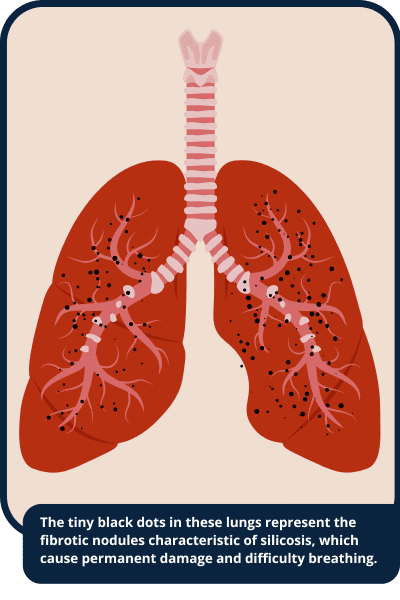A new guide from KINNECT aims to help employers manage the rising risk of respirable crystalline silica (RCS) and silicosis in the workplace.

The re-emergence of silicosis has become a serious concern across Australia, with workers in several industries – including construction, tunnelling, mining, and engineered stone – at greatest risk of contracting the disease.
That’s why, this October, KINNECT is launching its Guide to Managing the Risks of Respirable Crystalline Silica and Silicosis. This comprehensive resource has been created for employers, WHS managers, and HR professionals seeking to protect their people and remain compliant with the regulatory changes that have emerged over the last five years.
What the guide covers
Developed under the expert guidance of Dr. Matt Brandt, KINNECT’s Chief Medical Officer and Occupational & Environmental Physician, the guide brings together medical insight, WHS guidelines and checklists to help you:
- Understand how RCS causes silicosis
- Identify symptoms and types of silicosis
- Implement compliant health monitoring and surveillance programs
- Navigate WHS legislation
- Reduce your business’s legal, financial and reputational risks
- Support workers who have received a diagnosis
It also includes clear steps for establishing ongoing health monitoring programs — from pre-employment to exit — helping your workplace remain both compliant and safe.
Why it matters
“Silicosis has re-emerged as a serious health issue in Australia, particularly over the past decade,” says Dr Brandt. “Once thought to be a disease of the past, it has returned with alarming speed- especially in high-risk industries such as tunnelling and engineered stone fabrication.”
The impact can be devastating. Silicosis is incurable and often develops silently, with symptoms frequently appearing only after significant lung damage has occurred.
“It’s a potentially fatal disease. But because it is entirely preventable, doctors, regulators and industry have united to raise awareness, tighten controls and regulations, and strengthen health surveillance requirements,” Dr Brandt continues.
These measures include mandatory reporting to the National Occupational Respiratory Disease Registry, which gives regulators and medical professionals clearer insight into case numbers and the effectiveness of new guidelines and legislation.
Positive progress is emerging. “One of the encouraging trends we’re now seeing is earlier diagnosi s thanks to more sensitive screening methods,” he adds.
s thanks to more sensitive screening methods,” he adds.
“Yes, more cases are being identified. But there is also a far better chance of detecting the disease earlier and more accurately- offering improved long-term outcomes for workers and allowing employers to evaluate and improve their protective measures to prevent future cases.”
Who should read it?
This guide is essential reading for:
- Employers with teams in high-risk industries (construction, tunnelling, stone working, manufacturing, mining)
- WHS professionals who are responsible for implementing workplace safety programs
- HR managers managing the employment lifecycle and workforce health monitoring
If your workplace includes roles that expose workers to dust from cutting, drilling, grinding, or processing silica-rich materials, this guide – together with the information in our Resource Centre – will help you navigate compliance and proactively protect your people.
We also encourage you to learn more about how KINNECT can help with RCS Medicals and Respirator Fit Testing.



